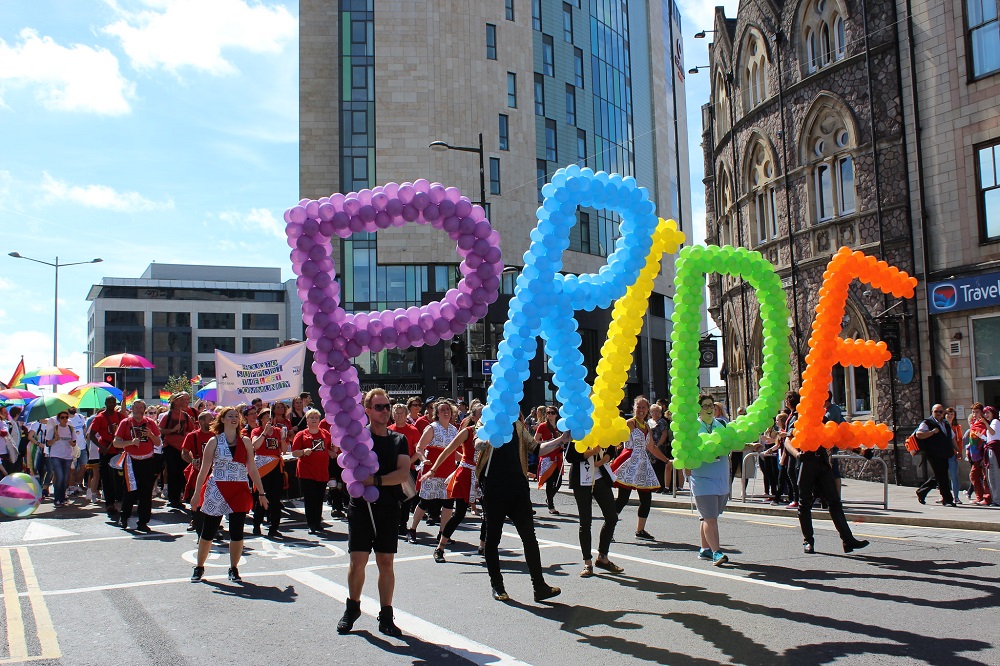Why local history matters

Norena Shopland
Over the past years, recurrent month-long observances, used by various organisations and individuals to raise awareness of an issue, commemorate a group or event, or celebrate something, have grown in number.
There are Black History Months, Women’s, Disability, various race and religious history months, and soon to be with us, LGBT+ History Month in February.
Every year we hear familiar refrains, ‘why isn’t there a white/men’s/able bodied/straight and so on, history month?’
The answer, primarily, is because the history of history (particularly when dominated by white, able bodied, heterosexual men) tends not include diversity.
Yet everyone has one, in one way or another, and when you put them all together you are left with that thing we call society – and until social history reflects all those diversities, we’ll carry on with our history months.
Illuminate
These celebratory periods also give us opportunities to raise awareness of local histories, to illuminate and inform mainstream narratives with real lives.
For example, correspondence pages of local newspapers can bring a wider appreciation of nationwide events which may differ from the national narrative. Such as local reactions to events like Section 28, or the HIV/AIDS crisis of the 1980s.
Take older people for example, who are often ignored. In periods when old age was considered an achievement, there are numerous interviews in local newspapers and more importantly, are often accompanied by portraits of working-class people, particularly women – so important for women’s history that lags so far behind that of men.
Such as Maragret Evans (née Morris) born on 1 November 1806 at Ganarew Farm, about four miles from Monmouth near the main road, along which coaches would run from London to Milford.
She recalled King George IV passing by when his reception was ‘anything but loyal, as he was so disliked on account of his cruelty to his wife, Queen Caroline. As the King pass through St. James’ Row, he was accosted by a Mrs Jackson, a laundress, with a shake of her flat-iron, as a mark of indignation.’

Or Mary Thomas who died, supposedly aged 105 in 1906 and had ‘a wonderful memory, and could remember the Battle of Waterloo, the Rebecca Riots’ and ‘a press-gang taking two of her uncles to the war prior to the Waterloo Campaign.’ There are so many more.
Methodology
With these small stories we can apply the ‘thick description’ methodology to move away from the ‘nothing of interest happens to ordinary people’ by analysing their lives in minute, or dense, details to see just how interesting they really are.
Take for example, a tiny story that appeared at the bottom of page 2 of the four-page newspaper, The Welshman, about the birth of a hermaphrodite (modern intersex) baby in 1851.

Using the ‘thick description’ method takes the researcher down numerous paths, such as regional history, the nature of the small town of Llanfynydd, Carmarthenshire a farming area, population around 1,376 with 253 houses; the nature of John’s work as a shoemaker and their decision to move to Ystradyfodwg, (now in the Rhondda) a large coal mining area which exploded in population from 1,998 in 1851 when the baby was born, to 3,857 when we find Sarah and Even in the 1861 census with their children Elinor and John.
By the 1871 census the family have taken in two lodgers raising questions about the financial stability of the working class.
In 1881 Elinor is a widow with a four-year-old daughter, Sarah, leading to the study of hermaphrodite fertility showing that for most, they are infertile making it unlikely that Elinor can be the unnamed baby.
Or perhaps her baby is a stepchild or has been adopted? If Elinor is not the hermaphrodite, then what happened to the baby?
Stillbirths at this time were not recorded but we know the baby was alive as the registrar was puzzled how to register ‘it,’ but to date no death record, or grave, of Sarah and Evan’s unnamed child has been found – so what became of the baby before it was ten-years-old and disappears from the records?
Did the couple give away their child? The medical profession would take ‘diverse’ children for study or even more horrific, the dreadfully named ‘freak shows’ would take hermaphrodites and put them on show for amusement and medical studies.
We will probably never know what happened to that little baby.
To be a local historian is to travel along all these diverse paths of research, and to see life through multiple lenses.
As the American, John W. Gardner, once wrote, ‘History never looks like history when you are living through it,’ and it is unlikely Sarah and Evan saw themselves as making history, but once in the pages of a newspaper they are captured forever and help us glimpse what life might have been like for ordinary people who for a short time, were extraordinary.
Support our Nation today
For the price of a cup of coffee a month you can help us create an independent, not-for-profit, national news service for the people of Wales, by the people of Wales.







Couldn’t agree more. The local is invariably the prism through which we experience and interpret the national, international, even the global.
Sport is a key aspect of this local history, particularly in populations with large and/or concentrated working class communities. Check out what Sporting Heritage is doing in Wales and contact me for more info [email protected]